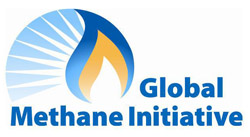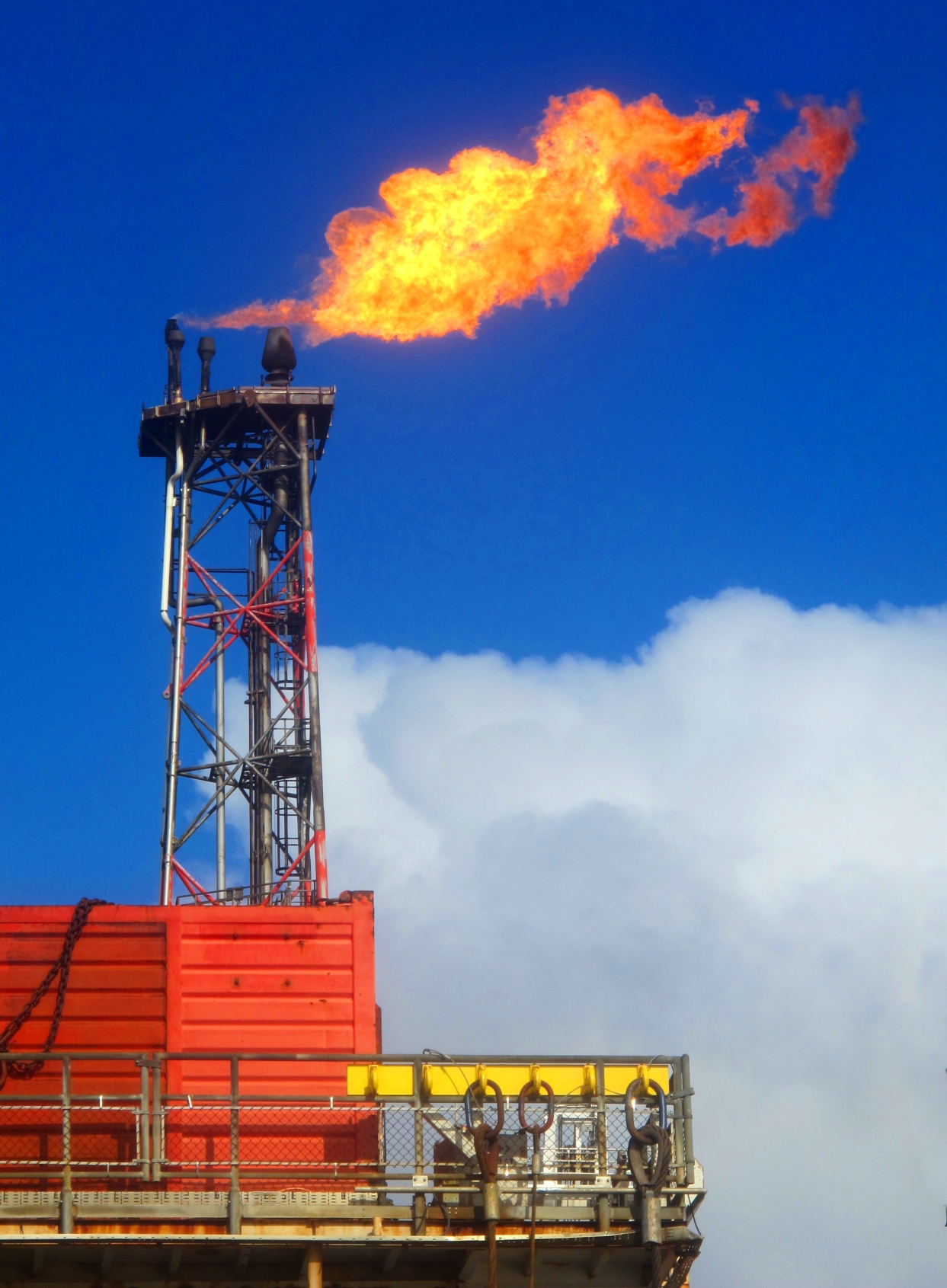
It’s odorless, colorless, but not harmless. Methane, found in land and under the seabed (where the Earth’s largest reservoir is located in the form of methane clathrates), can severely damage the planet when it escapes into the air. Atmospheric methane increased 170% since the Industrial Revolution. Methane is powerful: it causes 30% of global warming, and is more potent than carbon dioxide (one ton of methane = 82.5 tons of carbon dioxide).

Methane may be both the greatest danger and the greatest hope to save the Earth. That’s why those at COP26 in Glasgow cheered when 155 countries pledged to reduce methane emissions by 30% by 2030, signing the Global Methane Pledge.

Look through the eyes, and instruments, of Steven Wofsy, Harvard Professor of Atmospheric and Environmental Science, principal investigator, and Steven Hamburg, Environmental Defense Fund chief scientist, who along with Harvard’s Kelly Chance, Daniel Jacob, and Xiong Liu, designed an innovative technology with an academic, commercial, scientific, and philanthropic communal effort that takes a cue from COMSAT. Partners include BAE, Bezos Earth Fund, Blue Canyon Technologies, Google, Harvard School of Engineering and Applied Sciences and Center for Astrophysics, IO Aerospace, New Zealand Space Agency (NZSA), Smithsonian Astrophysical Observatory and SpaceX. MethaneSAT will circle the planet 15 times each day, pinpointing methane emitters so exactly that the actual facility leaking or venting the gas can be identified and revealed: data will be public. Liu commented: “MethaneSAT is not simply collecting data; we’re putting data into action.” (Powell 2023) MethaneSAT will be not only an eye in the sky but a finger pointing to specific polluters.

Once called on the celestial carpet, polluters will have a chance to mitigate methane emissions, perhaps even finding a profit in doing so. Here’s an example: coal mining releases methane that is hidden in the micropores of coal and the seams of a mine. If MethaneSAT detects strong emissions in a mining operation, that gas can be captured before it is released. But it not just an expense: methane can be used as an energy source. The U.S. Environmental Protection Agency (EPA) developed a Coal Mine Methane Project Cash Flow Model tool to coach mine operators on turning a problem into a profit center. Captured methane can be used as Compressed Natural Gas (CNG) or Liquified Natural Gas (LNG). Natural gas, still a fossil fuel but less polluting than coal, is 97% methane. When gas is burned for energy generation, it releases carbon dioxide, still a problem but better than releasing more potent methane as waste.

The gas and oil sector produced 40% of the world’s methane emissions in 2021. All together, methane leaks contribute 24% of global methane emissions. Capturing methane and then burning it turns methane into carbon dioxide and water: not ideal but less polluting. Coal, gas, and oil are not the only sources of methane emissions: the gas leaks from cut peatlands, landfills and wastewater treatment plants, farming, especially rice, and also animal agriculture. Biofuels that use crop or forest waste to produce electricity use methane. Some of these methods may qualify for carbon credits. It is true that turning methane from an atmospheric emission to a carbon-dioxide-emitting fuel is not exactly a climate solution, but it is better than just releasing atmospheric methane, accelerating the crisis.

MethaneSAT is not the first satellite to monitor the greenhouse gas. It was preceded by, and still linked to, MethaneAIR: both are part of a progression developing from the realization that addressing methane must be the first step in phasing out fossil fuels. Other methane-tracking satellites include:
Carbon Mapper – https://carbonmapper.org
EMIT – https://earth.jpl.nasa.gov/data/data-portal/Greenhouse-Gases
FENGYUN – https://satellite.nsmc.org.cn
Gaofen – https://eoportal.org
GHGSat – https://www.ghgsat.com
Greenhouse Gases Observing Satellite (GOSAT) – https://www.satnav.jaxa.jp
Tropomi – https://www.tropomi.eu
Limiting methane emissions can reduce global warming, change the course of the climate crisis, prevent 255,00 early deaths and 775,000 hospitalizations due to air pollution. and give us time to figure out the next challenge of limiting the damage by carbon dioxide that lasts longer. Methane is a low-hanging fruit. Now we have the right tools to identify (and fix) methane leaks and emissions, slowing acceleration of climate change.

Environmental Defense Fund (EDF). “This is the Methane Moment.” VIDEO https://www.youtube.com/watch?v=ZQiwTPDkKaE
Global Methane Pledge. https://www.globalmethanepledge.org/resources/global-methane-pledge
International Energy Agency (IEA), UNEP, and Climate and Clean Air Coalition (CCAC). “The Imperative of Cutting Methane from Fossil Fuels.” 23 November 2023. https://www.globalmethanepledge.org/sites/default/files/documents/2023-11/The%20Imperative%20of%20cutting%20methane%20from%20fossil%20fuels.pdf
Jacob, Daniel and Steven Wofsy with Jim Stock. “Satellite Detection of Methane Emissions.” Harvard Speaks on Climate Change, Salata Institute. VIDEO: https://youtu.be/rkRarcKgMmQ?si=3rsqyxVy86a-FrB_
Maguire, Yael. “How satellites, algorithms and AI can help map and trace methane sources.” 14 February 2024. Google Blog. AUDIO option. https://blog.google/outreach-initiatives/sustainability/how-satellites-algorithms-and-ai-can-help-map-and-trace-methane-sources/
Oil and Gas Methane Partnership 2.0 (OGMP 2.o). https:/ogmpartnership.com
MethaneSAT. “In Orbit.” 4 March 2024. https://www.methanesat.org/project-updates/methanesat-is-launching-today-on-groundbreaking-mission-to-protect-the-climate/
Powell, Alvin. “Buying crucial time in climate change flight.” The Harvard Gazette. 24 March 2023. https://news.harvard.edu/gazette/story/2023/03/methane-tracking-satellite-may-be-fastest-way-to-slow-climate-change
United States Environmental Protection Agency (EPA). “CMM Cash Flow Model.” https://www.epa.gov/cmop/cmm-cash-flow-model
Werner, Debra. “Not Invisible Anymore: Satellites reveal sources of atmospheric methane.” Space News. 25 January 2024. https://spacenews.com/satellites-reveal-sources-of-atmospheric-methane/
Wofsy, Steven C. “HIAPER Pole-to-Pole Observations (HIPPO): fine-grained, global-scale measurements of climatically important atmospheric gases and aerosols.” Philosophical Transactions of the Royal Society A: Mathematical, Physical and Engineering Sciences, Volume 369, Issue 1943, 2011. https://dash.harvard.edu/bitstream/handle/1//30761051/21300274.pdf?sequence=1
Wofsy, Steven C. with Matt Goisman. “Steven Wofsy: Recently launched MethaneSAT emissions satellite.” 5 March 2024. Harvard School of Engineering and Applied Sciences. VIDEO. https://seas.harvard.edu/news/2024/03/cutting-edge-methane-monitor
World Bank. “Global Flaring and Methane Reduction Partnership (GFMR). 2024. https://www.worldbank.org/en/programs/gasflaringreduction/methane-explained
Building the World Blog by Kathleen Lusk Brooke and Zoe G. Quinn is licensed under a Creative Commons Attribution-NonCommercial-NoDerivs 3.0 U
